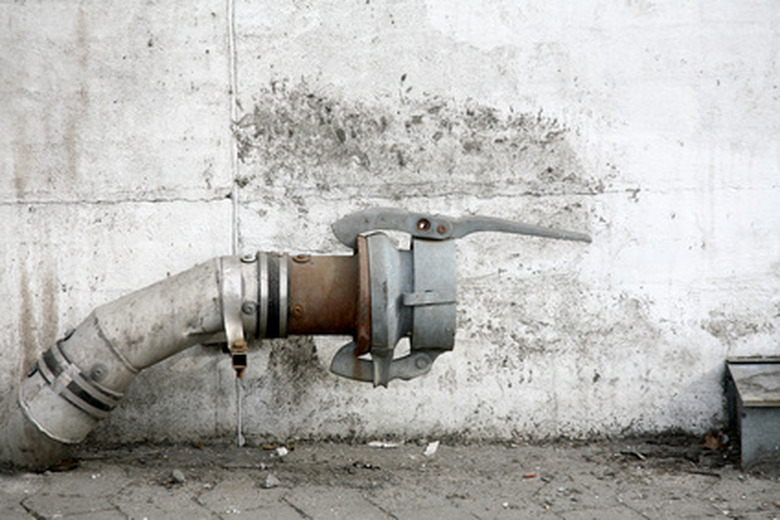How To Calculate The Velocity Of Water Through Pipes
Physicists and engineers use Poiseuille's law to predict the velocity of water through a pipe. This relationship is based on the assumption that the flow is laminar, which is an idealization that's more applicable to small capillaries than to water pipes. Turbulence is almost always a factor in larger pipes, as is friction caused by the interaction of the fluid with the pipe walls. These factors are difficult to quantify, especially turbulence, and Poiseuille's law doesn't always give an accurate approximation. However, if you maintain constant pressure, this law can give you a good idea of how flow rate differs when you change the pipe dimensions.
Statement of Poiseuille's Law
Statement of Poiseuille's Law
Poiseuille's law is sometimes referred to as the Hagen-Poiseuille law, because it was developed by a pair of researchers, French physicist Jean Leonard Marie Poiseuille and German hydraulics engineer Gotthilf Hagen, in the 1800s. According to this law, the flow rate (F) through a pipe of length L and radius r is given by:
\(F=\frac{\pi (P_1-P_2)r^4}{8\eta L}\)
where P1-P2 is the pressure difference between the ends of the pipe and η is the viscosity of the fluid.
You can derive a related quantity, the resistance to flow (R), by inverting this ratio:
\(R=\frac{1}{F}=\frac{8\eta L}{\pi (P_1-P_2)r^4}\)
As long as the temperature doesn't change, the viscosity of water remains constant, and if you are considering flow rate in a water system under fixed pressure and constant pipe length, you can rewrite Poiseuille's law as:
\(F=Kr^4\)
where K is a constant.
Comparing Flow Rates
Comparing Flow Rates
If you maintain a water system at constant pressure, you can calculate a value for the constant K after looking up the viscosity of water at the ambient temperature and expressing it in units compatible with your measurements. By maintaining the length of the pipe constant, you now have a proportionality between the fourth power of the radius and flow rate, and you can calculate how the rate will change when you change the radius. It's also possible to maintain the radius constant and vary the pipe length, although this would require a different constant. Comparing predicted to measured values of flow rate tells you how much turbulence and friction affect the results, and you can factor this information into your predictive calculations to make them more accurate.
Cite This Article
MLA
Deziel, Chris. "How To Calculate The Velocity Of Water Through Pipes" sciencing.com, https://www.sciencing.com/calculate-velocity-water-through-pipes-2758/. 5 December 2020.
APA
Deziel, Chris. (2020, December 5). How To Calculate The Velocity Of Water Through Pipes. sciencing.com. Retrieved from https://www.sciencing.com/calculate-velocity-water-through-pipes-2758/
Chicago
Deziel, Chris. How To Calculate The Velocity Of Water Through Pipes last modified March 24, 2022. https://www.sciencing.com/calculate-velocity-water-through-pipes-2758/
